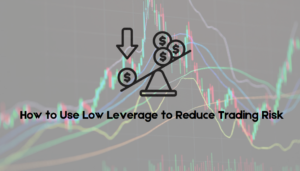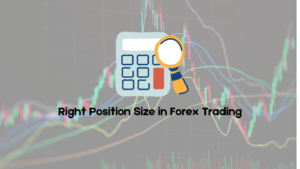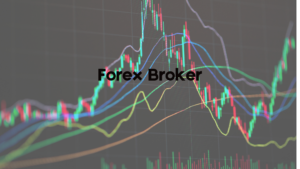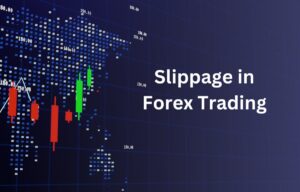Slippage in financial markets refers to the difference between the expected price of a trade and the actual price at which the trade is executed. This phenomenon typically occurs during periods of high volatility or when large orders are placed in a thinly traded market. Slippage can be either positive or negative, meaning traders might get a better or worse price than anticipated. The primary cause of slippage is the rapid movement of prices between the time a trade order is placed and when it is executed.
Slippage occurs because financial markets operate on a first-come, first-served basis, and the price of a security can change in the time it takes for a trade to be processed. For instance, in fast-moving markets, the price can shift significantly between the moment a trader decides to place an order and when the order reaches the exchange. Additionally, large orders might not be filled at the expected price if there isn’t enough liquidity at that level, forcing the execution at the next available price, leading to slippage.
How Does Slippage Affect Traders in Different Market Conditions?
Slippage can have varying impacts on traders depending on the market conditions. In highly volatile markets, slippage is more common and tends to be more significant. For example, during major economic announcements or unexpected geopolitical events, prices can swing wildly, increasing the likelihood of slippage. In such environments, traders may face challenges in executing trades at their desired price points, leading to increased transaction costs and potential losses.
In contrast, during stable market conditions with low volatility, slippage is typically less pronounced. However, even in these markets, slippage can occur if there is a sudden spike in trading activity or if the market depth is insufficient to handle a large order. For retail traders using market orders, slippage can be particularly detrimental as they are guaranteed execution but not the price, meaning they might end up buying higher or selling lower than intended, impacting their overall trading strategy and profitability.
What Are the Key Factors Contributing to Slippage in Forex Trading?
Several key factors contribute to slippage in Forex trading, with liquidity and market volatility being the most significant. Forex markets are decentralized and operate 24/5, making them highly liquid most of the time. However, during periods of low liquidity, such as after market hours or during major holidays, there may not be enough buyers or sellers at the desired price level, resulting in slippage. Additionally, during times of high volatility, such as after a major economic report release, prices can change rapidly, leading to slippage as the order execution may lag behind the real-time price.
Another critical factor is the type of order used by the trader. Market orders, which are designed to execute immediately at the best available price, are more prone to slippage because they prioritize speed over price. On the other hand, limit orders can help traders avoid slippage by setting a specific price at which they are willing to buy or sell. However, the trade-off is that the order may not be filled if the market does not reach the specified price. Finally, the speed and quality of the broker’s execution can also influence the extent of slippage, with faster execution reducing the likelihood of price discrepancies.
How Can Traders Calculate and Mitigate Slippage in Their Strategies?
Traders can calculate slippage by comparing the expected price of a trade to the actual execution price. The slippage amount is simply the difference between these two prices. For instance, if a trader places a buy order expecting to execute at $100 but the trade is filled at $100.50, the slippage is $0.50 per share. To calculate the percentage slippage, the formula is: \[(Execution Price – Expected Price) / Expected Price\] × 100. Monitoring slippage across multiple trades can help traders identify patterns and understand how slippage impacts their overall performance.
To mitigate slippage, traders can employ several strategies. One common approach is using limit orders instead of market orders, as limit orders specify the maximum or minimum price at which the trader is willing to buy or sell. This prevents execution at a worse price but may result in the order not being filled if the market doesn’t reach the desired level. Another method is trading during periods of high liquidity when there are more participants in the market, which typically reduces the likelihood of significant slippage. Additionally, traders can avoid entering trades during major news events or times of high volatility when slippage is more likely to occur.
What Role Does Liquidity Play in the Occurrence of Slippage?
Liquidity plays a crucial role in the occurrence of slippage in financial markets. Liquidity refers to the ease with which an asset can be bought or sold without causing a significant impact on its price. In highly liquid markets, such as major currency pairs in Forex or large-cap stocks, there are generally many buyers and sellers at various price levels. This abundance of participants makes it easier to execute trades close to the expected price, thereby reducing the likelihood of slippage.
Conversely, in low-liquidity markets, there are fewer participants and often wider bid-ask spreads. This means that large orders can cause significant price movement as they absorb the available liquidity, leading to greater slippage. For example, if a trader places a large buy order in a thinly traded stock, there might not be enough sellers at the desired price, causing the trade to execute at progressively higher prices. Understanding the liquidity profile of the asset being traded is essential for minimizing slippage, especially for those executing large orders or trading in less liquid markets.
How Does Slippage Differ Between Market Orders and Limit Orders?
Slippage affects market orders and limit orders differently due to the nature of their execution. Market orders are designed to execute immediately at the best available price, regardless of what that price may be. This urgency can lead to slippage, particularly in fast-moving or volatile markets, as the order may be filled at a price different from what was expected. While market orders ensure execution, they do not guarantee the price, making them more susceptible to slippage, especially during periods of low liquidity or high volatility.
On the other hand, limit orders allow traders to set a specific price at which they are willing to buy or sell. The key advantage of limit orders is that they eliminate the risk of negative slippage since the trade will only execute at the set price or better. However, this comes at the cost of potentially not being filled if the market does not reach the specified price. In essence, while limit orders provide price protection, they do not guarantee execution, making them a tool for traders looking to avoid slippage but willing to accept the possibility of missing a trade.
What Are the Best Tools and Platforms to Monitor and Manage Slippage?
To effectively monitor and manage slippage, traders can leverage a variety of tools and platforms designed to track trade execution quality and market conditions. One of the most widely used tools is the trading platform’s built-in order execution report, which provides detailed information on the prices at which trades were executed versus the expected prices. Platforms like MetaTrader 4/5, NinjaTrader, and TradingView offer features that allow traders to track slippage on each trade, helping them understand how often it occurs and under what conditions.
Additionally, some advanced platforms and tools provide real-time market data and analytics, which can help traders anticipate and mitigate slippage. Tools like Bloomberg Terminal or Thomson Reuters Eikon offer comprehensive market insights, including liquidity measures and volatility indicators, which can signal when slippage is more likely to occur. Risk management tools, such as TradeStation’s slippage calculator or broker-specific features like Interactive Brokers’ SmartRouting, which seeks the best price across multiple venues, can also be instrumental in reducing slippage.
How Does Slippage Impact Long-Term Investment Strategies?
Slippage can have a subtle yet significant impact on long-term investment strategies, especially for investors who make frequent trades or manage large portfolios. Over time, even small amounts of slippage can erode returns, particularly if trades consistently execute at worse prices than anticipated. For long-term investors, slippage is less of a concern during individual trades but can accumulate into a considerable cost when considering the entire investment horizon.
In long-term strategies, slippage is often more relevant during periods of portfolio rebalancing or when executing large orders. For instance, if a fund manager needs to adjust positions across a large portfolio, slippage can result in less favorable execution prices, affecting the overall performance. Therefore, it’s essential for long-term investors to consider slippage in their cost management strategies and possibly employ tactics like dollar-cost averaging, using limit orders, or trading during periods of high liquidity to mitigate its effects.
What Are the Differences Between Positive and Negative Slippage?
Slippage can occur in two forms: positive and negative, each affecting a trade differently. Positive slippage occurs when a trade is executed at a better price than expected. For example, if a trader places a buy order expecting to pay $50 per share, but the order is filled at $49.50, they benefit from positive slippage, effectively paying less than anticipated. Positive slippage can occur in fast-moving markets where prices are rapidly changing in the trader’s favor or in highly liquid markets where there is an abundance of orders available at better prices.
Negative slippage, on the other hand, happens when a trade is executed at a worse price than expected. If a trader expects to buy at $50 per share but ends up paying $50.50, they experience negative slippage, which increases the cost of the trade. Negative slippage is more common during periods of high volatility or low liquidity, where there might not be enough market participants at the desired price level, forcing the execution at a less favorable price. Managing negative slippage is critical as it can accumulate over time, reducing overall profitability, particularly in high-frequency or large-volume trading strategies.
High-Frequency Traders and Slippage
High-frequency traders (HFTs) employ sophisticated algorithms and high-speed technology to execute trades at extremely rapid rates. To manage slippage, HFTs use several strategies. One common approach is to employ advanced order routing systems that can quickly assess and select the best available price across multiple venues. These systems use real-time data to avoid executing trades at unfavorable prices. HFTs also often utilize direct market access (DMA), which allows them to bypass intermediaries and reduce the latency between decision-making and execution. By minimizing this latency, HFTs can better manage the risk of slippage.
Another tactic is the use of liquidity-providing strategies, such as market-making, where traders place orders at specific price levels to provide liquidity and gain favorable execution. By doing so, they can mitigate the impact of slippage because their orders are less likely to be executed at suboptimal prices. Additionally, HFTs often engage in predictive modeling to forecast price movements and adjust their strategies in real-time to counteract potential slippage.
Influence of Slippage on Profitability
Slippage can significantly impact the overall profitability of trading strategies, particularly in high-frequency trading where profit margins are typically very thin. When slippage occurs, trades may be executed at prices worse than expected, leading to higher transaction costs and reduced profits. For instance, if a trader is expecting to buy a stock at $100 but ends up purchasing it at $100.50 due to slippage, the additional cost can erode potential gains. Over numerous trades, this can compound, leading to a substantial negative impact on the strategy’s profitability.
In addition to directly affecting the cost of trades, slippage can also disrupt the execution of trading strategies that rely on precise price points. Strategies such as arbitrage, which profit from small price differences across markets, are particularly sensitive to slippage. If the price moves unfavorably due to slippage, the arbitrage opportunity may be nullified, resulting in a loss instead of a profit. Therefore, effective management of slippage is crucial for maintaining the profitability of trading strategies.
Regulatory Measures Related to Slippage
Regulatory measures concerning slippage vary across different markets, but many focus on enhancing transparency and fairness. In the European Union, for example, the Markets in Financial Instruments Directive (MiFID II) requires trading venues to provide information on execution quality, including the extent of slippage. This regulation aims to ensure that traders are aware of the potential for slippage and can make informed decisions. Additionally, MiFID II mandates that firms report on their execution venues’ performance, promoting greater transparency and accountability.
In the United States, the Securities and Exchange Commission (SEC) and the Commodity Futures Trading Commission (CFTC) have implemented rules to address issues related to slippage and market manipulation. The SEC’s Regulation NMS (National Market System) includes provisions to ensure that trades are executed at the best available price, which indirectly helps manage slippage. The CFTC, on the other hand, oversees futures and derivatives markets, enforcing rules that aim to prevent practices that could lead to excessive slippage. These regulatory measures collectively seek to mitigate the negative impacts of slippage and promote fair and efficient trading environments.
Common Misconceptions About Slippage
One common misconception about slippage is that it only occurs during high volatility periods. While it is true that slippage is more pronounced during volatile market conditions, it can also occur during periods of low volatility, especially if there is low liquidity. Traders often assume that slippage is only an issue in fast-moving markets or during major news events, but it can affect trades at any time when there is insufficient liquidity to match the trade size at the expected price.
Another misconception is that slippage is always detrimental to trading performance. While slippage can indeed lead to less favorable trade executions, it is not always harmful. In some cases, slippage can work to a trader’s advantage, particularly if the market moves in their favor after the trade is executed. For instance, a trader might experience slippage when buying a stock, but if the stock’s price rises immediately after the purchase, the slippage could actually result in a better-than-expected outcome.
Variation of Slippage Across Asset Classes
Slippage can vary significantly across different asset classes due to differences in liquidity and market structure. In equities, slippage is often influenced by the liquidity of the stock being traded. High-volume, blue-chip stocks generally experience less slippage compared to smaller-cap or thinly traded stocks. This is because higher liquidity in large-cap stocks means there are more orders at various price levels, reducing the likelihood of significant slippage.
In contrast, commodities and futures markets can experience greater slippage due to their inherent volatility and the size of trades. Futures contracts, for example, often have larger tick sizes and can be more prone to slippage during periods of high volatility or when large orders are placed. Similarly, in the forex market, slippage can be influenced by the liquidity of currency pairs, with major pairs like EUR/USD experiencing less slippage compared to exotic pairs with lower liquidity.
Latest Developments and Trends in Slippage Management
Recent developments in slippage management have focused on leveraging advanced technologies to minimize its impact. One notable trend is the use of artificial intelligence and machine learning algorithms to predict and manage slippage. These technologies analyze vast amounts of market data to identify patterns and optimize trade execution strategies, aiming to reduce the risk of unfavorable price changes.
Another trend is the increasing adoption of smart order routing (SOR) systems, which automatically direct trades to the best execution venues based on real-time data. These systems can dynamically adjust to market conditions to minimize slippage by finding the most advantageous prices and reducing latency. Additionally, there is growing emphasis on transparency and regulatory requirements that mandate firms to disclose execution quality, which helps traders better understand and manage slippage risks.
Slippage is an inherent aspect of forex trading that can significantly impact trading performance and strategy effectiveness. It occurs when trades are executed at prices different from those expected, primarily due to market volatility, liquidity issues, or delays in order execution. While slippage can be detrimental, leading to higher transaction costs and reduced profitability, it can also occasionally work in a trader’s favor if the market moves favorably post-execution.
Understanding and managing slippage is crucial for forex traders, as it directly affects their ability to execute trades efficiently and achieve their trading goals. Advanced technologies, such as artificial intelligence, smart order routing, and improved transparency through regulatory measures, are increasingly being employed to mitigate the negative effects of slippage. By leveraging these tools and maintaining awareness of market conditions, traders can better navigate the complexities of slippage and enhance their overall trading performance.












